 |
NATIONAL INCOME: WHERE IT COMES FROM AND WHERE IT GOES |
| << THE DATA OF MACROECONOMICS (Continued…):How to construct the CPI |
| NATIONAL INCOME: WHERE IT COMES FROM AND WHERE IT GOES (Continued…) >> |
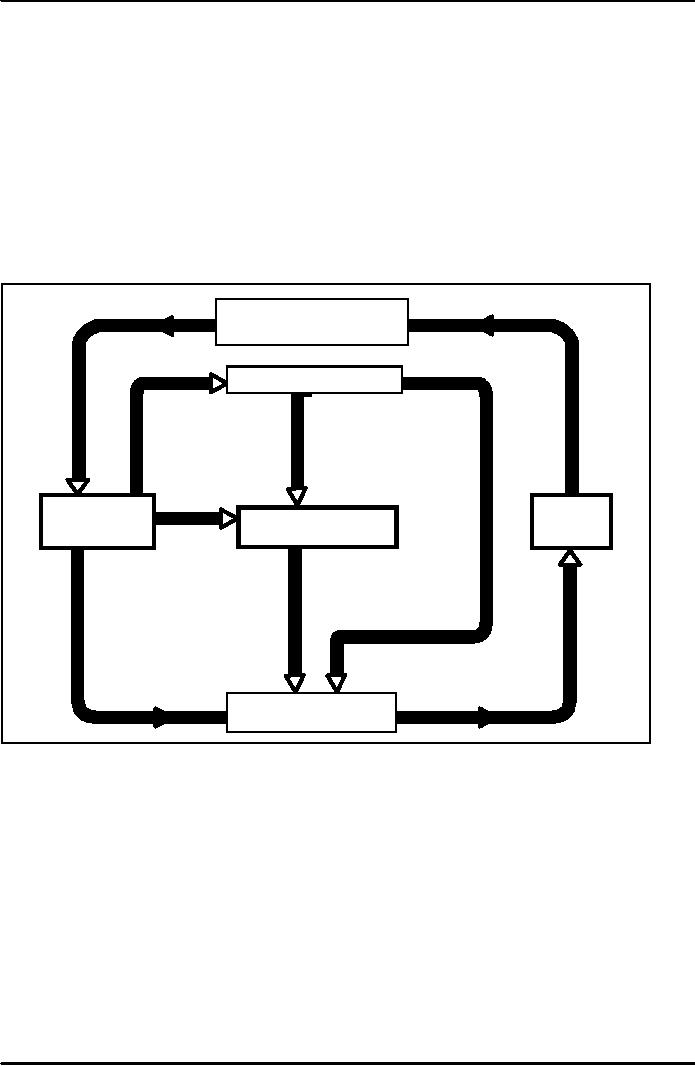
Macroeconomics
ECO 403
VU
LESSON
07
NATIONAL
INCOME: WHERE IT COMES FROM AND WHERE IT
GOES
Key
Questions to be addressed
·
What
determines the economy's
total output/income
·
How
the prices of the factors of
production are
determined
·
How
total income is
distributed
·
What
determines the demand for
goods and services
·
How
equilibrium in the goods
market is achieved
Income
Factor
payments
Markets
for Factors of
Production
Financial
Markets
Private
Savings
Govt.
Deficit
Taxes
Households
Firms
Government
Govt.
Purchases
Investments
Consumption
Firm
revenues
Markets
for Goods
and
Services
OUTLINE
OF MODEL
(A
closed economy, market-clearing
model)
Supply
side
·
factor
markets (supply, demand,
price)
·
determination
of output/income
Demand
side
·
determinants
of C,
I,
and G
19
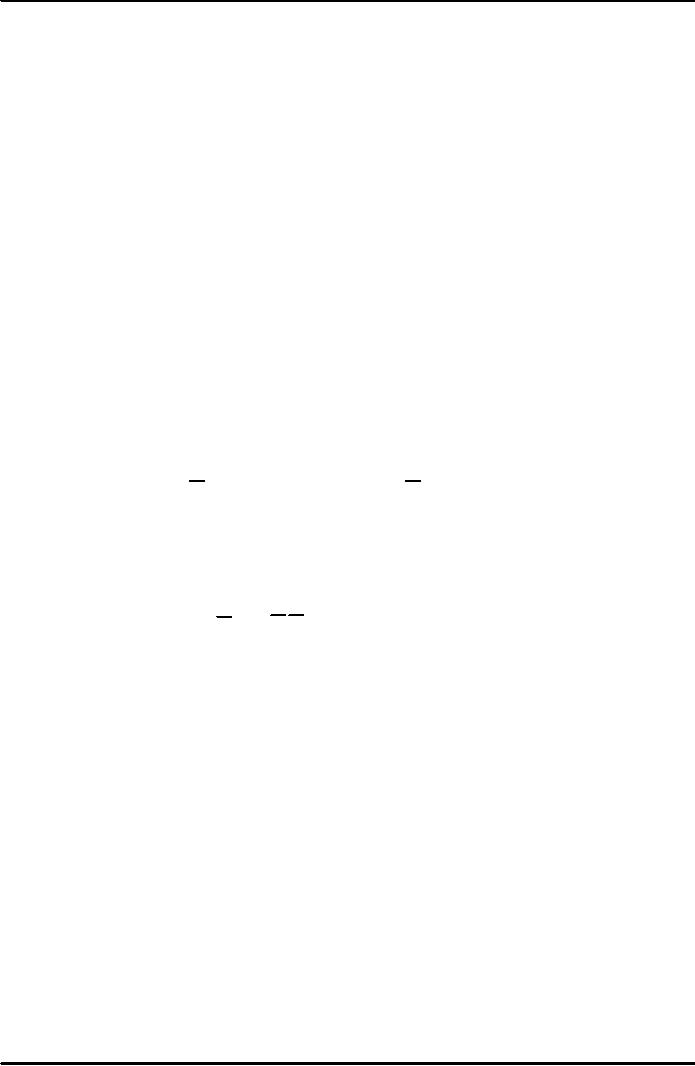
Macroeconomics
ECO 403
VU
Equilibrium
·
goods
market
·
loanable
funds market
Factors
of production
K
= capital, tools, machines,
and structures used in
production
L
= labor, the physical and
mental efforts of
workers
The
production function
·
denoted
Y = F (K, L)
·
shows
how much output (Y ) the
economy can produce
from
K
units of capital and L units
of labor.
·
reflects
the economy's level of
technology.
·
exhibits
constant returns to
scale.
Assumptions
of the model
Technology
is fixed.
The
economy's supplies of capital
and labor are fixed
at
K=K
and
L=L
Determining
GDP
Output
is determined by the fixed
factor supplies and the
fixed state
of
technology:
Y
= F (K, L)
The
distribution of national
income
·
determined
by factor
prices,
the
prices per unit that
firms pay for the
factors of production.
·
The
wage
is
the price of L,
the
rental
rate is the
price of K.
Notation
W
= Nominal
Wage
R
= Nominal
Rental Rate
P
= Price
of Output
W
/P
=
Real Wage (Measured in Units
of Output)
R
/P
=
Real Rental Rate
20
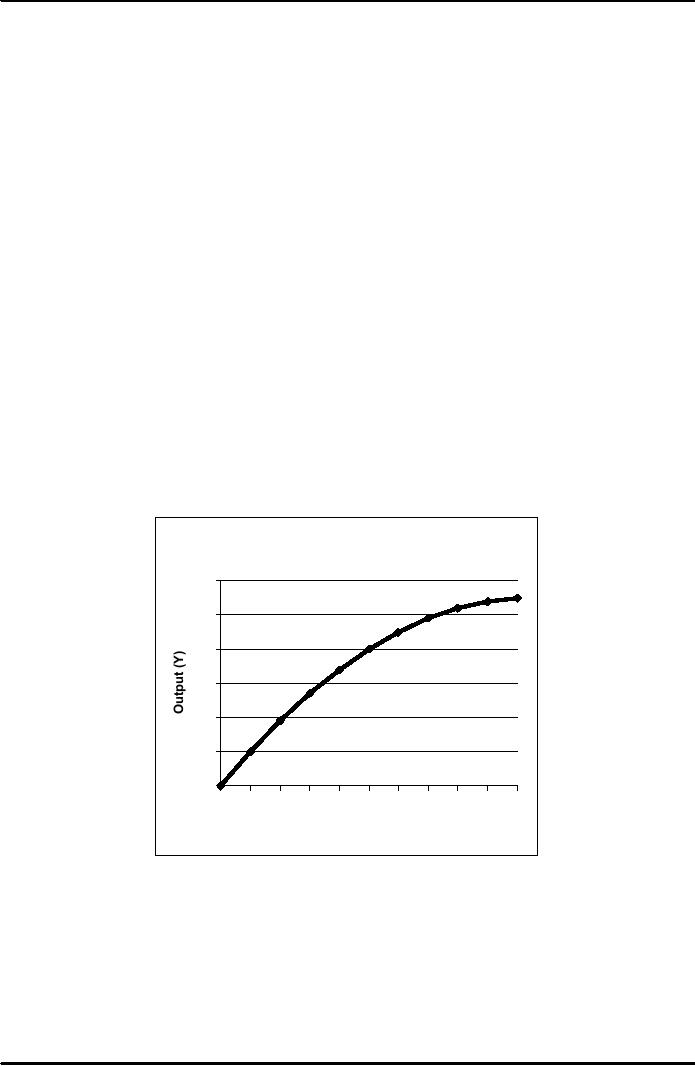
Macroeconomics
ECO 403
VU
How
factor prices are
determined
·
Factor
prices are determined by
supply and demand in factor
markets.
·
Recall:
Supply of each factor is
fixed.
·
What
about demand?
Demand
for labor
·
Assume
markets are
competitive:
each
firm takes W, R, and P as
given
·
Basic
idea:
A
firm hires each unit of
labor
if
the cost does not
exceed the benefit.
Cost
=
real wage
Benefit
= marginal product of
labor
Marginal
product of labor (MPL)
def:
The
extra output the firm
can produce using an
additional unit of labor
(holding other inputs
fixed):
MPL
= F
(K,
L
+1)
F (K,
L)
Production
Function
Production
function
60
50
40
30
20
10
0
0
1
2
3
4
5
6
7
8
9
10
Labor
(L)
21
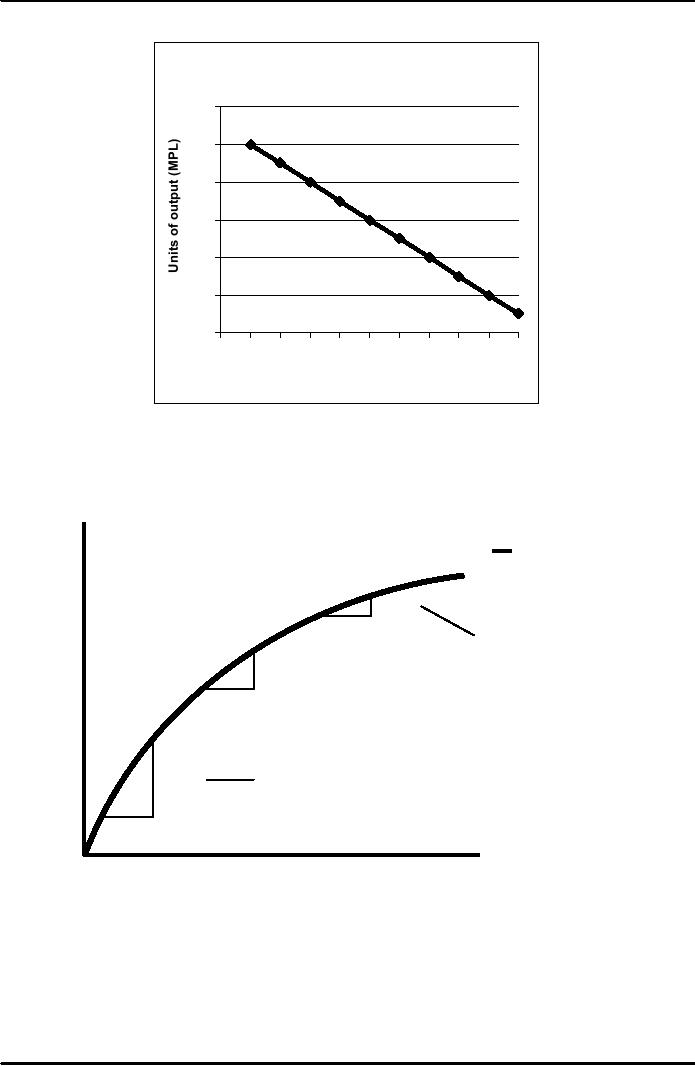
Macroeconomics
ECO 403
VU
Marginal
Product of Labor
M
arginal Product of Labor (M
PL)
12
10
8
6
4
2
0
0
1
2
3
4
5
6
7
8
9
10
Labor
(L)
The
MPL and the production
function
Y
Output
F(K,L)
MPL
1
As
more labor is
added,
MPL
↓
MPL
1
Slope
of the production
MPL
function
equals MPL
1
L
Labor
22
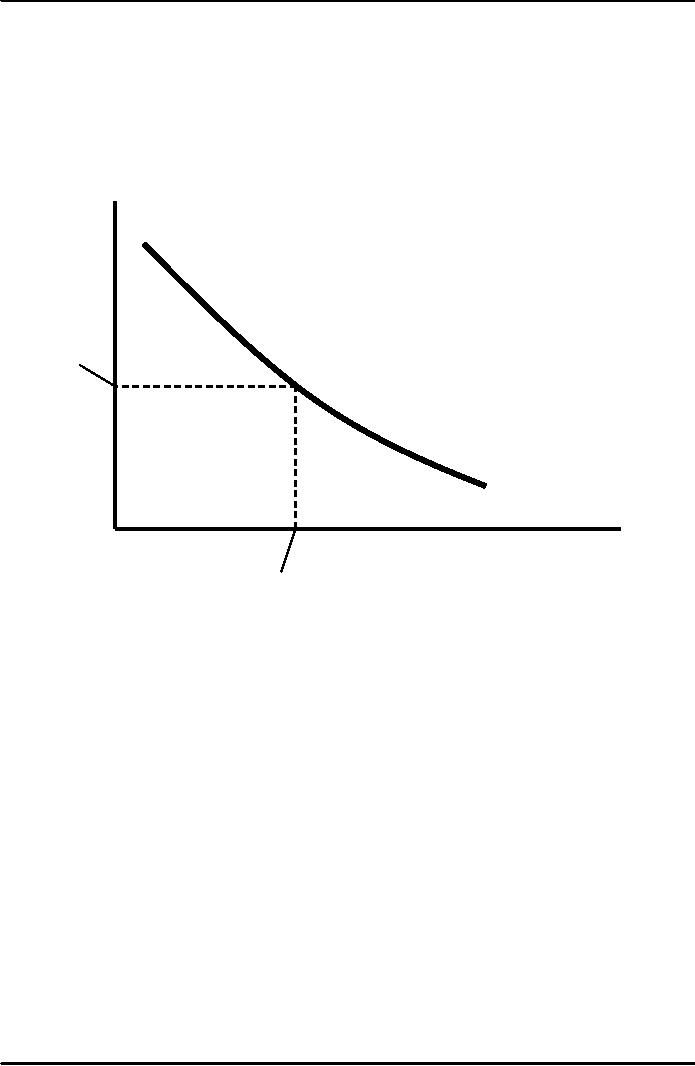
Macroeconomics
ECO 403
VU
Diminishing
marginal returns
·
As
a factor input is increased,
its marginal product falls
(other things equal).
·
Intuition:
↑L while
holding K fixed
⇒
Fewer
machines per worker
⇒
Lower
productivity
MPL
and
the demand for
labor
Units
of
output
Each
firm hires labor up to the
point
where
MPL =
W/P
Real
wage
MPL,
Labor
demand
Units
of labor, L
Quantity
of labor
demanded
Determining
the rental rate
We
have just seen that MPL =
W/P
The
same logic shows that MPK =
R/P :
·
Diminishing
returns to capital: MPK ↓
as K
↑
·
MPK
curve is the firm's demand
curve for renting
capital.
·
Firms
maximize profits by choosing K
such that MPK = R/P .
23
Table of Contents:
- INTRODUCTION:COURSE DESCRIPTION, TEN PRINCIPLES OF ECONOMICS
- PRINCIPLE OF MACROECONOMICS:People Face Tradeoffs
- IMPORTANCE OF MACROECONOMICS:Interest rates and rental payments
- THE DATA OF MACROECONOMICS:Rules for computing GDP
- THE DATA OF MACROECONOMICS (Continued…):Components of Expenditures
- THE DATA OF MACROECONOMICS (Continued…):How to construct the CPI
- NATIONAL INCOME: WHERE IT COMES FROM AND WHERE IT GOES
- NATIONAL INCOME: WHERE IT COMES FROM AND WHERE IT GOES (Continued…)
- NATIONAL INCOME: WHERE IT COMES FROM AND WHERE IT GOES (Continued…)
- NATIONAL INCOME: WHERE IT COMES FROM AND WHERE IT GOES (Continued…)
- MONEY AND INFLATION:The Quantity Equation, Inflation and interest rates
- MONEY AND INFLATION (Continued…):Money demand and the nominal interest rate
- MONEY AND INFLATION (Continued…):Costs of expected inflation:
- MONEY AND INFLATION (Continued…):The Classical Dichotomy
- OPEN ECONOMY:Three experiments, The nominal exchange rate
- OPEN ECONOMY (Continued…):The Determinants of the Nominal Exchange Rate
- OPEN ECONOMY (Continued…):A first model of the natural rate
- ISSUES IN UNEMPLOYMENT:Public Policy and Job Search
- ECONOMIC GROWTH:THE SOLOW MODEL, Saving and investment
- ECONOMIC GROWTH (Continued…):The Steady State
- ECONOMIC GROWTH (Continued…):The Golden Rule Capital Stock
- ECONOMIC GROWTH (Continued…):The Golden Rule, Policies to promote growth
- ECONOMIC GROWTH (Continued…):Possible problems with industrial policy
- AGGREGATE DEMAND AND AGGREGATE SUPPLY:When prices are sticky
- AGGREGATE DEMAND AND AGGREGATE SUPPLY (Continued…):
- AGGREGATE DEMAND AND AGGREGATE SUPPLY (Continued…):
- AGGREGATE DEMAND AND AGGREGATE SUPPLY (Continued…)
- AGGREGATE DEMAND AND AGGREGATE SUPPLY (Continued…)
- AGGREGATE DEMAND AND AGGREGATE SUPPLY (Continued…)
- AGGREGATE DEMAND IN THE OPEN ECONOMY:Lessons about fiscal policy
- AGGREGATE DEMAND IN THE OPEN ECONOMY(Continued…):Fixed exchange rates
- AGGREGATE DEMAND IN THE OPEN ECONOMY (Continued…):Why income might not rise
- AGGREGATE SUPPLY:The sticky-price model
- AGGREGATE SUPPLY (Continued…):Deriving the Phillips Curve from SRAS
- GOVERNMENT DEBT:Permanent Debt, Floating Debt, Unfunded Debts
- GOVERNMENT DEBT (Continued…):Starting with too little capital,
- CONSUMPTION:Secular Stagnation and Simon Kuznets
- CONSUMPTION (Continued…):Consumer Preferences, Constraints on Borrowings
- CONSUMPTION (Continued…):The Life-cycle Consumption Function
- INVESTMENT:The Rental Price of Capital, The Cost of Capital
- INVESTMENT (Continued…):The Determinants of Investment
- INVESTMENT (Continued…):Financing Constraints, Residential Investment
- INVESTMENT (Continued…):Inventories and the Real Interest Rate
- MONEY:Money Supply, Fractional Reserve Banking,
- MONEY (Continued…):Three Instruments of Money Supply, Money Demand